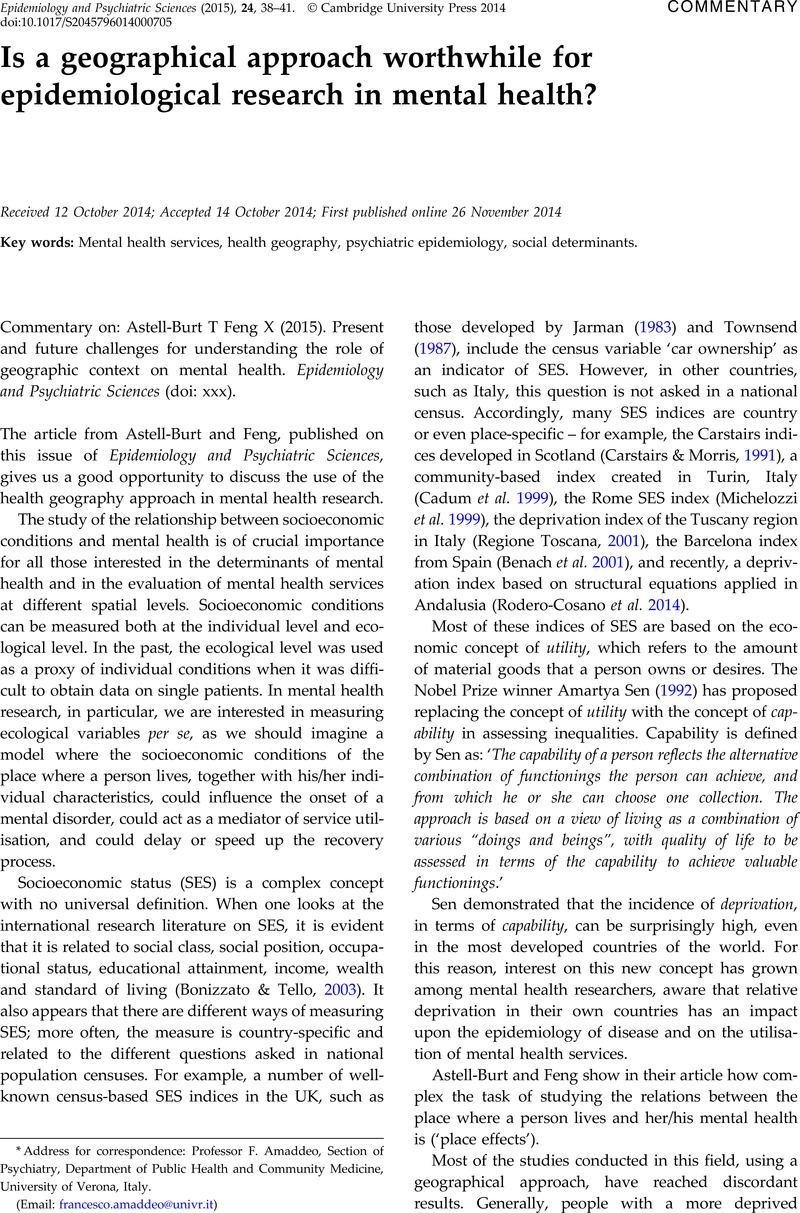Crossref Citations
This article has been cited by the following publications. This list is generated based on data provided by Crossref.
Bagheri, Nasser
Batterham, Philip J.
Salvador-Carulla, Luis
Chen, Yingxi
Page, Andrew
Calear, Alison L.
and
Congdon, Peter
2019.
Development of the Australian neighborhood social fragmentation index and its association with spatial variation in depression across communities.
Social Psychiatry and Psychiatric Epidemiology,
Vol. 54,
Issue. 10,
p.
1189.
Ostinelli, Edoardo G.
D’Agostino, Armando
Pesce, Luisa
Zangani, Caroline
Miragoli, Paolo
Durbano, Federico
Biffi, Giuseppe
Mencacci, Claudio
Scarone, Silvio
and
Gambini, Orsola
2021.
Mental health services and the city: a neighbourhood-level epidemiological study.
Journal of Public Health,
Vol. 29,
Issue. 6,
p.
1343.





